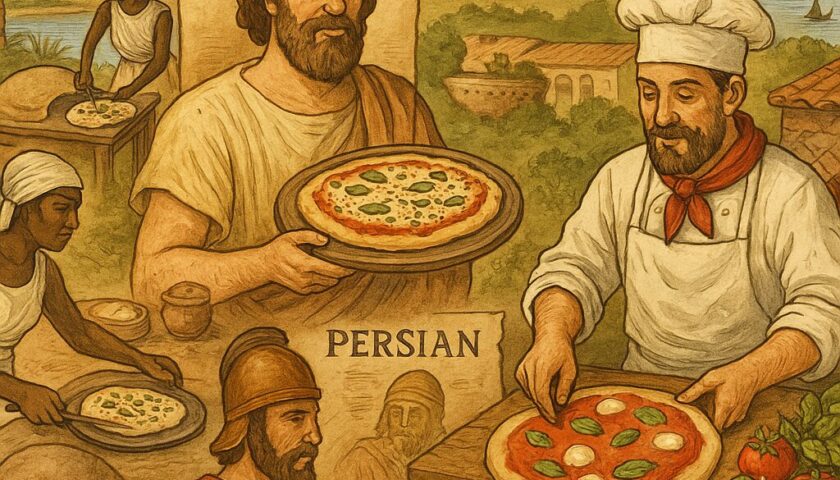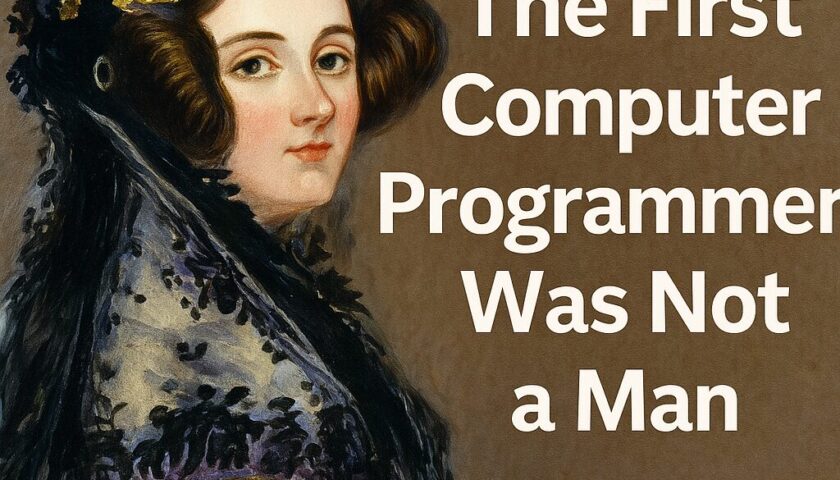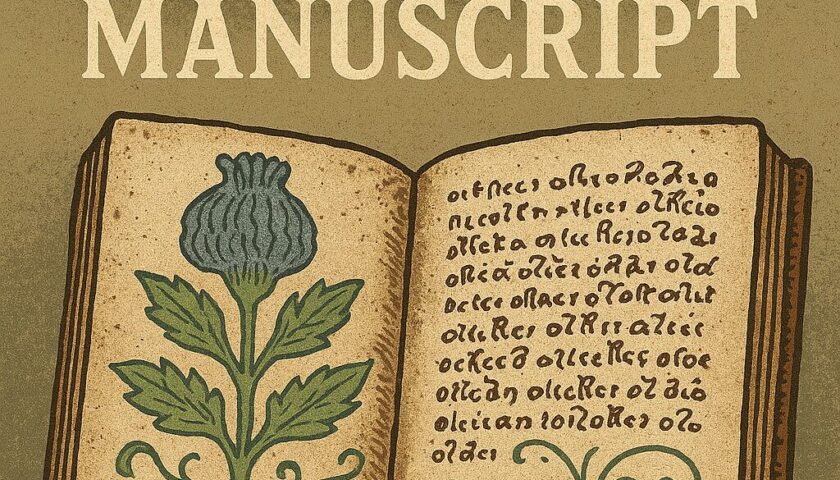History is often thought of as a compilation of dates, names, and events laid out in textbooks for students to memorize. Yet, beyond the commonly known facts, history holds countless mysteries, surprises, and awe-inspiring stories that rarely make it into the classroom. From fascinating discoveries about ancient civilizations to incredible coincidences that altered the course of nations, the tapestry of human history is rich, complex, and often more bizarre than fiction.
In this blog, we will dive deep into the lesser-known yet astonishing aspects of history that challenge conventional narratives. Prepare to uncover secrets from ancient societies, surprising innovations from eras long past, and curious connections that span continents and centuries.
The Mysterious Origin of Pizza: Ancient Civilizations’ Influence

When we think of pizza, Italy naturally comes to mind. However, the roots of this beloved dish go far deeper and wider than most people realize. While pizza is often celebrated as an iconic Italian invention, historical evidence suggests that flatbreads with various toppings have been enjoyed across different cultures and continents for thousands of years. This global culinary tradition spans ancient Egypt, Greece, Persia, and even the Middle East.
Ancient Egypt: The Earliest Bread-Baking Culture
As early as 5000 BCE, Egyptians were cultivating wheat and developing baking techniques that would set the foundation for what we now recognize as bread. Archaeological discoveries have shown that Egyptians made flatbreads by grinding grains into flour, mixing it with water, and baking it on hot stones or in mud ovens. Often, these flatbreads were topped with herbs, oils, and other seasonings to enhance flavor. While these early breads were simple, they bear a resemblance to what would later evolve into pizza-like dishes.
Flatbreads were central to Egyptian cuisine, and many experts believe they were used as both everyday meals and ceremonial offerings. The simplicity of flatbreads made them a versatile food that could be easily prepared and modified with toppings, especially during religious festivals and communal gatherings.
Ancient Greece: The Plakous Connection
Moving forward in time, the ancient Greeks developed a dish known as “plakous.” This flatbread, often topped with onions, garlic, cheese, and various herbs, became a staple in Greek society. Unlike the Egyptians, the Greeks experimented with different toppings and sauces, further developing the concept of customizable flatbreads.
The popularity of plakous spread throughout the Hellenistic world, influencing culinary practices in other regions, particularly the Italian Peninsula. Greek colonists who settled in southern Italy and Sicily brought their culinary traditions with them, laying the groundwork for what would eventually become pizza.
Persia: The Soldiers’ Bread
Interestingly, a form of pizza-like bread was also popular among Persian soldiers during the reign of Darius the Great (521–486 BCE). These soldiers would bake flatbreads on their shields over open flames and then top them with cheese and dates. This innovative cooking method demonstrated the versatility of flatbreads as a portable, nourishing meal—qualities that would contribute to pizza’s eventual worldwide popularity.
The Persian technique of baking bread over fire was likely passed on to other cultures, including the Greeks and Romans, who would further refine the process.
Middle Eastern Influence: The Lahmacun Connection
Additionally, the Middle East has its own tradition of flatbreads topped with meats, herbs, and spices. One prominent example is “lahmacun,” a dish still enjoyed today throughout Turkey, Lebanon, Syria, and other parts of the region. Often referred to as “Turkish pizza,” lahmacun consists of a thin, round flatbread topped with minced meat, vegetables, and herbs before being baked to perfection.
The concept of topping flatbreads with flavorful ingredients appears to be a universal culinary practice that predates modern pizza by millennia. These influences likely played a role in shaping the evolution of pizza as it traveled across cultures and continents.
Roman Influence and the Birth of Pizza in Italy
While flatbreads with various toppings were already popular throughout the Mediterranean, it wasn’t until the Roman Empire that pizza-like dishes began to take on more familiar forms. The Romans enjoyed a dish called “picea,” which was a type of flatbread topped with oils, herbs, and honey. It is believed that the word “pizza” may have even derived from “picea,” although this etymology remains debated.
With the fall of the Roman Empire, these culinary traditions continued to evolve, particularly in the southern regions of Italy. Naples, in particular, became a culinary hub where different cultures and flavors merged.
The Birth of Modern Pizza in Naples
Although pizza-like dishes were enjoyed across various cultures, it was in Naples, Italy, that the modern pizza as we know it began to take shape. By the 18th and early 19th centuries, street vendors in Naples were serving flatbreads topped with simple ingredients such as garlic, cheese, anchovies, and tomatoes.
The introduction of tomatoes to Italy in the 16th century, brought over from the Americas, revolutionized the dish. Initially considered poisonous by Europeans, tomatoes eventually became a staple ingredient in Italian cuisine.
The famous Margherita pizza, topped with tomatoes, mozzarella, and basil to represent the Italian flag’s colors, was reportedly created in honor of Queen Margherita of Savoy in 1889. This origin story, however, has been contested by historians who suggest it may have been a marketing ploy to establish pizza as a uniquely Italian dish at a time of rising nationalism.
Global Popularity and Reinvention
Pizza’s journey from its ancient origins to modern popularity is a testament to its adaptability. As Italian immigrants spread across the globe in the late 19th and early 20th centuries, so too did their culinary traditions. The dish quickly gained popularity in countries like the United States, where new variations such as deep-dish and New York-style pizzas emerged.
Today, pizza is enjoyed in countless forms worldwide. From the wood-fired ovens of Naples to the inventive fusion pizzas found in Tokyo and New York, the dish has evolved beyond its origins. Yet, the influence of ancient civilizations like Egypt, Greece, Persia, and the Middle East can still be traced in the diverse styles and toppings enjoyed today.
The First Computer Programmer Was Not a Man

The world today is driven by technology, and computers are at the heart of modern life. But did you know that the first person to write a computer program was not a man, but a woman named Ada Lovelace?
Born in 1815, Ada Lovelace was the daughter of the famous poet Lord Byron. However, it was her mother, Lady Byron, who encouraged her to study mathematics and science. In a world where women were largely excluded from scientific fields, Lovelace’s brilliance stood out.
In the 1840s, Lovelace worked with Charles Babbage, who had conceptualized a mechanical computing device known as the Analytical Engine. While Babbage focused on the machine’s mechanical aspects, Lovelace envisioned something more profound. She realized that the Analytical Engine could be programmed to perform tasks beyond mere calculations.
Her notes, which included the first algorithm intended to be processed by a machine, are considered by many to be the world’s first computer program. Lovelace even predicted that computers could one day be used for tasks beyond mathematics, such as composing music or creating art. Her foresight was so advanced that her contributions were largely ignored until the mid-20th century.
Today, Ada Lovelace is celebrated as a pioneer in computer science. October 13th is recognized as Ada Lovelace Day, dedicated to celebrating the achievements of women in science, technology, engineering, and mathematics (STEM).
The Forgotten African Empire That Was Richer Than Any Kingdom in Europe
When considering wealthy and powerful historical empires, names like Rome, Britain, and Persia often come to mind. But few realize that one of the wealthiest rulers in history was Mansa Musa, the Emperor of the Mali Empire in the 14th century.
Mansa Musa’s reign from 1312 to 1337 saw the Mali Empire flourish economically and culturally. Its wealth primarily came from abundant natural resources, particularly gold. In fact, it is estimated that Mali produced over half of the world’s gold supply during Musa’s reign.
But it wasn’t just wealth that made Mansa Musa notable; it was his legendary pilgrimage to Mecca in 1324. Leading a caravan of over 60,000 people, including servants, soldiers, and merchants, he distributed gold so generously along the way that it caused inflation in cities like Cairo.
His generosity and wealth left such an impression on the world that he was immortalized in the Catalan Atlas of 1375, one of the most important maps of Medieval Europe. Mansa Musa is depicted holding a golden scepter and an orb of gold, symbolizing his immense wealth.
Despite his historical significance, Mansa Musa’s empire gradually faded after his death, largely due to internal strife and external pressures. However, his legacy as one of the richest and most powerful rulers in history continues to captivate historians to this day.
The Unsolved Mystery of the Voynich Manuscript

The Voynich Manuscript is one of the most perplexing and enigmatic books in history. Its origins, authorship, and purpose remain entirely unknown, despite more than a century of intense scrutiny by historians, cryptographers, and linguists. Written in an undeciphered script accompanied by bizarre illustrations, the manuscript has captivated the minds of researchers and amateurs alike since its rediscovery in the early 20th century.
Discovery and Provenance
The manuscript is named after Wilfrid Voynich, a Polish-Lithuanian bookseller who acquired it in 1912 from the Villa Mondragone, a Jesuit college near Rome. From the moment he discovered it, Voynich realized the manuscript was unlike anything he had ever encountered. Bound in vellum and consisting of 240 pages, the text is written in an unknown language that has defied all attempts at translation.
Although the precise origin of the Voynich Manuscript remains uncertain, carbon dating of the vellum conducted in 2009 revealed that it was produced sometime between 1404 and 1438. However, the author of the manuscript, as well as the purpose for which it was created, remains a mystery.
The Content of the Manuscript
The Voynich Manuscript is divided into several distinct sections, each featuring its own unique illustrations and themes:
- Botanical Section: Over 100 drawings of various plants, many of which do not resemble any known species. Some researchers speculate these plants could be symbolic or stylized representations, while others believe they depict real but now-extinct flora.
- Astronomical Section: Includes diagrams resembling astronomical charts and zodiac symbols. Interestingly, the zodiac symbols are accompanied by drawings of human figures, many of them female, suggesting some form of astrological or cosmological interpretation.
- Biological Section: Features drawings of naked women bathing in pools or interconnected tubes, which has led some researchers to speculate that the manuscript might contain information about medicine, fertility, or alchemical processes.
- Pharmaceutical Section: Depicts drawings of various herbs and roots, along with what appear to be pharmaceutical jars. This has led to theories that the manuscript was intended as an herbal remedy guide.
- Recipes Section: Contains lengthy passages of text arranged into short paragraphs, suggesting that these might be recipes, incantations, or other instructional writings.
Attempts to Decipher the Manuscript
Since its rediscovery, countless experts have attempted to decode the Voynich Manuscript. Notable efforts include:
- William F. Friedman, one of the most successful American cryptologists of World War II, dedicated years to analyzing the manuscript without success.
- Alan Turing, the brilliant British mathematician who cracked the German Enigma code, also took interest in the manuscript, but his efforts proved fruitless.
- Artificial Intelligence (AI): In recent years, researchers have employed AI and machine learning algorithms to attempt decoding. While some claim to have made progress, the manuscript’s language and purpose remain unsolved.
Popular Theories Surrounding the Voynich Manuscript
The Voynich Manuscript’s cryptic nature has spawned numerous theories, ranging from the plausible to the outright fantastical:
- Alchemical Text: Some researchers believe the manuscript is an alchemical manual, filled with symbolic language intended to be understood only by its creator or a select group of practitioners.
- Herbal Medicine Guide: Based on the botanical drawings and pharmaceutical depictions, many believe the manuscript was created as a guide to herbal remedies, possibly by an unknown medieval physician or scholar.
- Encoded Language: Some cryptographers suggest that the text is written in a highly sophisticated cipher or even a constructed language that has yet to be identified.
- Hoax: Others argue that the manuscript is an elaborate hoax, designed to mystify and deceive. However, the complexity and consistency of the writing have led most experts to dismiss this theory.
- Extraterrestrial Origin: Fringe theorists have speculated that the manuscript could be the work of an alien civilization, due to its otherworldly illustrations and indecipherable script.
Modern Research and Continuing Mystery
Despite advanced technological tools, including computer analysis and artificial intelligence, the Voynich Manuscript remains stubbornly undecoded. Some researchers believe it may never be fully understood, especially if the script represents a lost or invented language known only to its creator.
In 2019, a scholar named Gerard Cheshire claimed to have cracked the manuscript’s code, suggesting that it was a medieval compendium of information concerning women’s health, written in a lost proto-Romance language. However, his findings were met with skepticism by the academic community, and the mystery persists.
Cultural Impact and Legacy
The allure of the Voynich Manuscript lies not only in its cryptographic challenge but also in its status as a cultural enigma. Over the years, it has inspired novels, films, and even video games, all seeking to explore its secrets. To some, the manuscript is a beautiful work of art; to others, it represents a lost body of knowledge waiting to be reclaimed.
Regardless of its true nature, the Voynich Manuscript remains a testament to the human desire for understanding. Its mysterious text and hauntingly beautiful illustrations continue to fascinate researchers and enthusiasts alike.
Why It Still Remains Unsovled
The continued mystery surrounding the Voynich Manuscript may be attributed to several factors:
- The possibility that it is written in a unique or dead language.
- Potential encoding methods that have yet to be recognized.
- The intricate illustrations that may hold the key to understanding the text.
- A deliberate attempt by the author to obscure the text’s meaning.
Whatever the truth may be, the Voynich Manuscript serves as a haunting reminder that not all knowledge is meant to be fully understood. As new technologies emerge, the possibility of decoding its secrets remains within reach—but for now, it continues to defy explanation.
Conclusion
The exploration of history is like navigating a vast, intricate puzzle where pieces are constantly being discovered, reexamined, and pieced together. What we consider as common knowledge today is often just a sliver of the full narrative, shaped by cultural perspectives, political agendas, and the inevitable passage of time. These lesser-known historical facts demonstrate that the world is far more intricate and fascinating than most of us have been led to believe.
From the ancient culinary traditions that inspired modern pizza to the visionary achievements of Ada Lovelace, history is filled with stories that challenge mainstream narratives. The grandeur of the Mali Empire under Mansa Musa is a testament to Africa’s rich historical legacy, often overlooked or misrepresented in popular discourse. The mystery of the Voynich Manuscript, with its cryptic text and enigmatic illustrations, serves as a reminder that not all knowledge from the past is meant to be fully understood.
What these stories share in common is their ability to reshape our understanding of the world. They push us to question established beliefs, to look beyond the surface, and to recognize that history is not static but ever-evolving. New discoveries continue to be made, rewriting chapters that we once thought were complete.
It is essential to approach history with curiosity and humility, understanding that there is always more to uncover. The fascinating tales of forgotten empires, unsung heroes, and unexplained mysteries prove that history is not just a series of facts to be memorized, but a living narrative that grows richer with every discovery.
Moreover, these stories highlight the importance of inclusivity in historical research. For too long, history has been predominantly told from a narrow perspective, often excluding the voices and achievements of women, minorities, and lesser-known cultures. As historians continue to unearth new information and reconsider existing knowledge, the tapestry of history becomes more complete, vibrant, and accurate.
The journey of learning about these hidden historical facts is not only about gaining knowledge but also about understanding how much more remains to be explored. Whether it is through technological advancements, archaeological discoveries, or a reexamination of written records, history continues to reveal itself to those who seek.
Ultimately, delving into these remarkable stories serves as a powerful reminder of the resilience, creativity, and diversity of the human experience. It teaches us that progress is not always linear and that innovation often arises from the most unexpected places. It encourages us to remain open-minded, curious, and willing to challenge the narratives we have been taught.
As we move forward, it is crucial to preserve these stories and pass them on to future generations. For in doing so, we not only honor the past but also inspire a brighter, more inclusive future where all histories are valued and understood. The more we learn, the more we appreciate the complexity of our shared heritage—and the more we realize just how much there still is to discover.

